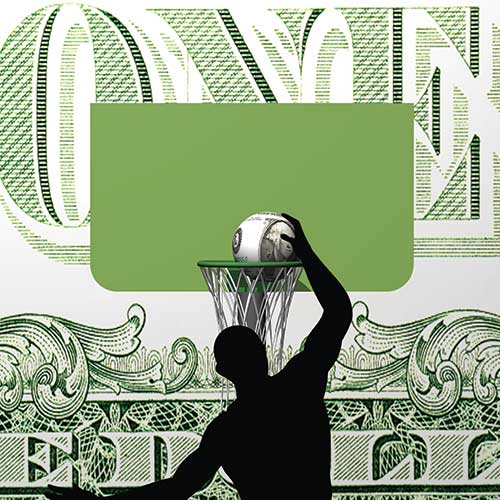It’s about the money
N-I-L no longer just spells a word for nothing.
For success in college athletics, many factors must combine, such as student-athletes, coaches, fans, academics and overall quality of campus life. Rising recently is a new element: NIL.

About two years ago, the NCAA — confronted with public opinion, state legislatures and losses in court cases — allowed student-athletes to accept third-party payments for use of their names, images or likenesses. (Schools still cannot pay student-athletes to play.) The student-athlete can be represented by a business agent.
So what’s happened since?
“A once-in-a-generation — or longer — change in the macro-economic and regulatory environment,” said Neil Sullivan, a UD vice president and director of athletics, who added he supports NIL, “but when it’s connected to recruiting and transferring players, it can be dangerous.”
He pointed to a former, traditional view of college sports, which, he said, was “particularly true of UD. A person comes to a U.S. school to get a world-class education, which is paid for by a loyal, loving fan base who supports that person through ups and downs. We watch them grow from freshman to senior year. And then they have a lifelong love affair with UD.
“But the days of the Bucky Bockhorns of the world are fading,” he said, referring to the 1958 Flyer grad who started for three NIT teams and was a color commentator for Flyer basketball for 50 years.
“We want,” Sullivan said, “to be about education, competition and a town-gown community relationship. But now we are in a much more transactional environment.”
“We want to be about education, competition and a town-gown community relationship. But now we are in a much more transactional environment.”
Collectives, which are third-party NIL crowdfunding opportunities separate from educational institutions, provide compensation to players. “Fans pool together,” Sullivan said, “and assemble money in a common portfolio managed to pay student-athletes to perform legitimate services using their name, image and
likeness.”
Schools have no formal control over these third-party entities or their finances.
“The concept is a way for all fans, at every contribution level — no matter how big or small — to invest in student-athletes,” Sullivan said.
For Flyer fans, there is Dayton 6th, an entity (distinct from the University) led by Matt Farrell ’06 and Tom Whalen ’11 and including advisers such as Dayton basketball Hall of Fame members Brian Roberts ’08 and Keith Waleskowksi ’04. All sponsorship payments to Dayton 6th allow for direct compensation to Flyer student-athletes for their engagement — whether that is signing autographs to be mailed to Dayton 6th supporters, visiting local nonprofit organizations, promoting regional philanthropic initiatives or hosting youth basketball clinics and camps.
No money from ticket sales or contributions to UD goes to NIL. That reality has created a concern among schools that people who have been donors will shift their funding to pay athletes rather than contribute to athletic departments so schools can pay coaches, keep up facilities, and pay for transportation, scholarships, room and board.
NIL combined with changes in transfer rules has also created a new normal with team rosters. “The traditional motivations for a player were fit with a program, playing time and the team’s scheme of play,” Sullivan said. “These may now be secondary to
money.”
Complicating it all is uncertainty. More than 30 states now have laws or rules related to NIL; they are not uniform and some conflict with others as well as with NCAA regulations.
“How do you have a legitimate national championship?” Sullivan asked. “It’s like in golf me saying, ‘I think this hole is a par 3,’ and you say, ‘I think it is a par 5.’”
Some bills have been introduced in Congress to sort it all out, but at the moment none seem to be headed out of committee. But what’s the alternative? The collapse of interstate competition would not be an optimal outcome.
“It’s an unsettled economic and recruiting environment,” Sullivan said. “We will adapt. It will take the involvement of all the Flyer community, but we will find a solution that fits us.”